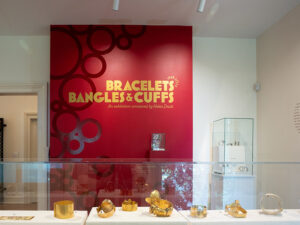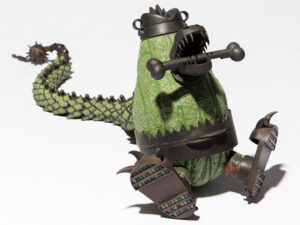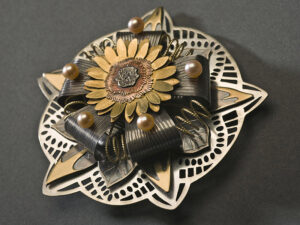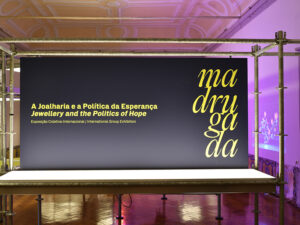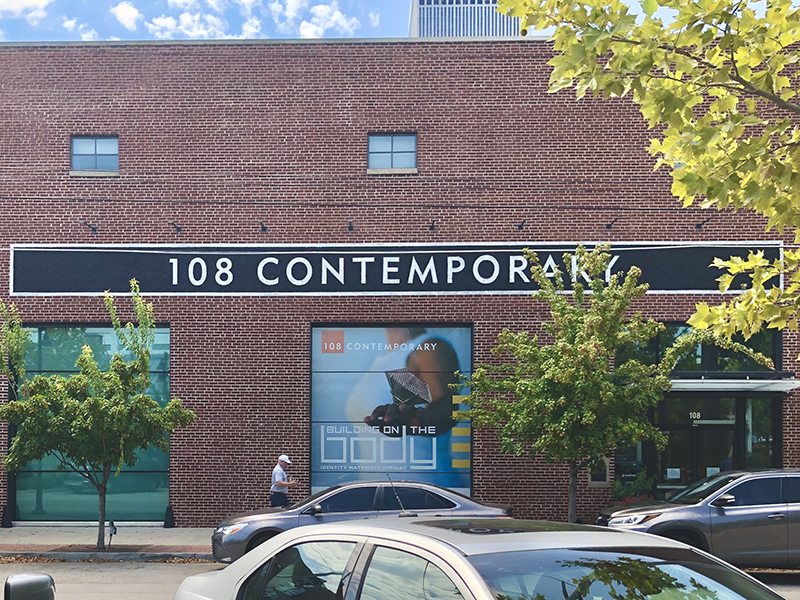
Olivia Shih: In August of this year, 108|Contemporary held an art jewelry exhibition, Building on the Body: Identity, Materials, Jewelry, curated by Erin Rappleye. How did your collaboration with Erin begin? What was the most interesting aspect of the exhibition for you?
Susan Baley: The idea for the Building on the Body exhibition came from Jan Jennings, secretary of 108|Contemporary’s board of directors. Jennings, a professor emeritus from Cornell University, has an academic background in design and architectural preservation, along with an interest in contemporary art jewelry. She met Erin Rappleye through a mutual friend who teaches at Tulsa Community College, where Rappleye is an assistant professor of art with a background in metal arts. For two years prior to the opening, Jennings and Rappleye worked together to meld their interests in architecture and jewelry into a thought-provoking exhibition—the first to feature jewelry at 108|Contemporary. The most amazing part of the collaboration was watching Rappleye’s curatorial vision for displaying the jewelry come into being. She was so sensitive to the way visitors would interact with the work, and she actually built all the display furniture for the exhibition. Every aspect was carefully considered to create a cohesive design that married with the graphic design elements for the exhibition. I’ve never worked with a curator who had such a clear vision of the way to display the work along with the building skills to realize the vision.
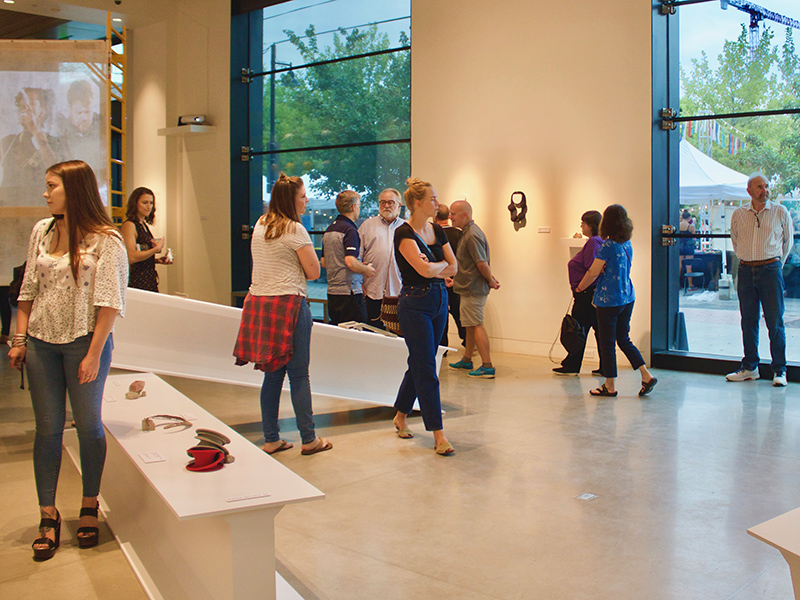
RELATED: A Review of Building on the Body
RELATED: Namita Wiggers on Exhibiting Contemporary Jewelry in Museums
108|Contemporary has held many thought-provoking exhibitions, including 2016’s Savages & Princesses: The Persistence of Native American Stereotypes and 2017’s Both Sides Now: Joyce J. Scott & Sonya Clark. Can you tell us more about these two exhibitions?
Susan Baley: With exhibitions like Savages & Princesses and Both Sides Now, 108|Contemporary has given a platform for artists to create conversations on race, representation, and injustice. Curated by America Meredith, Savages and Princesses brought together 14 contemporary Native American visual artists from Oklahoma who reclaim their right to represent their own reality as Native Americans. Made possible with funding from The Andy Warhol Foundation for the Visual Arts, the exhibition is currently touring through ExhibitsUSA. In Both Sides Now, Joyce J. Scott and Sonya Clark addressed issues of race, representation, and injustice. Scott works with beads, sculpture, and glassmaking; Clark uses fiber and human hair in her work. Their compelling art ultimately seeks to make sense of complex issues that open a path toward understanding. That exhibition was made possible by the John and Robyn Horn Foundation, Robin Ballenger, and Friends of Fiber International.
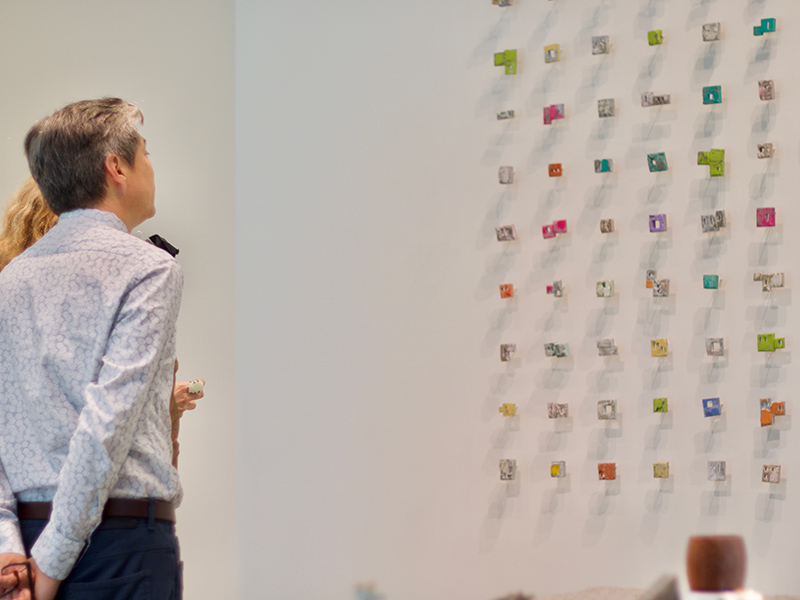
As an organization invested in building a community around craft and design, how do you define contemporary fine craft?
Susan Baley: Our organization focuses on exhibiting work made from traditionally accepted craft materials: clay, fiber, glass, metal, and wood. However, 108|Contemporary also seeks to expand our audience’s definition of craft. For instance, one of our 2020 exhibitions will feature sculptural work by Jonathan Hils made from plastic through digital and analog production. We also challenge the perception of craft as distinct from art. We intentionally use the term “fine craft” to connect with the concept of “fine art.” In our vision, the two are on equal footing.
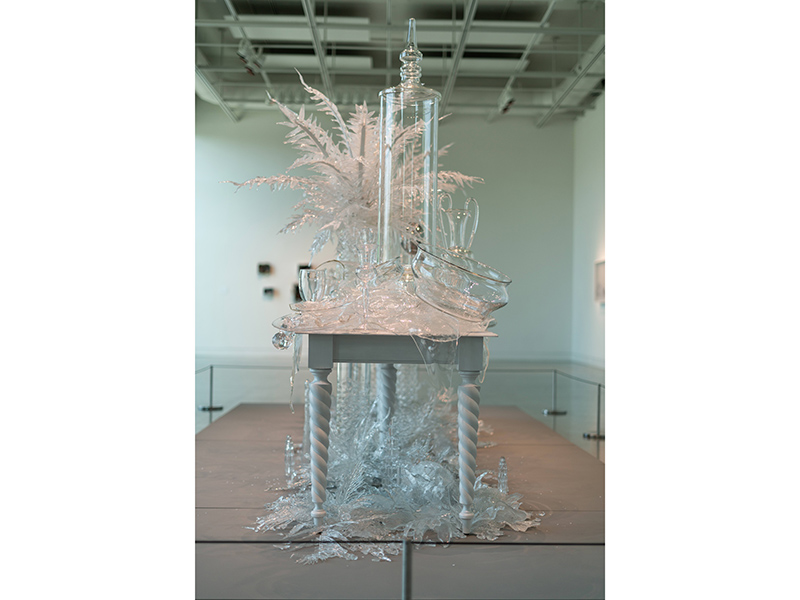
What’s the craft scene like in Oklahoma? Does traditional craft play a more dominant role than contemporary craft does?
Susan Baley: At 108|Contemporary, we recognize the diversity of cultures in Oklahoma by forming a community of fine craft artists and spotlighting the contemporary expressions of their cultural traditions. We build upon Oklahoma’s rich Native American traditions, exemplified by the collections at the Gilcrease Museum and Philbrook Museum of Art, both in Tulsa. Traditional craft coexists with contemporary craft in Oklahoma. For instance, many Native American artists use traditional Native American craft methods to examine contemporary issues such as identity.

Please name a few Oklahoman contemporary craft artists we should know.
Susan Baley: It’s hard to name just a few! However, our 2020 exhibition schedule will feature several Oklahoma contemporary craft artists, including Anita Fields (clay and fiber) and Molly Murphy Adams (beadwork). Fields and Murphy Adams are both currently Tulsa Artist Fellows. We feature Oklahoma artists in our juried gift shop, including jewelry makers Audrey Peck, Cheri Tatum, E. Dee Tabor, Emily Chase, JJ Huelsman, Maria Irvine, Melodye Blancett, and Penni Gage.
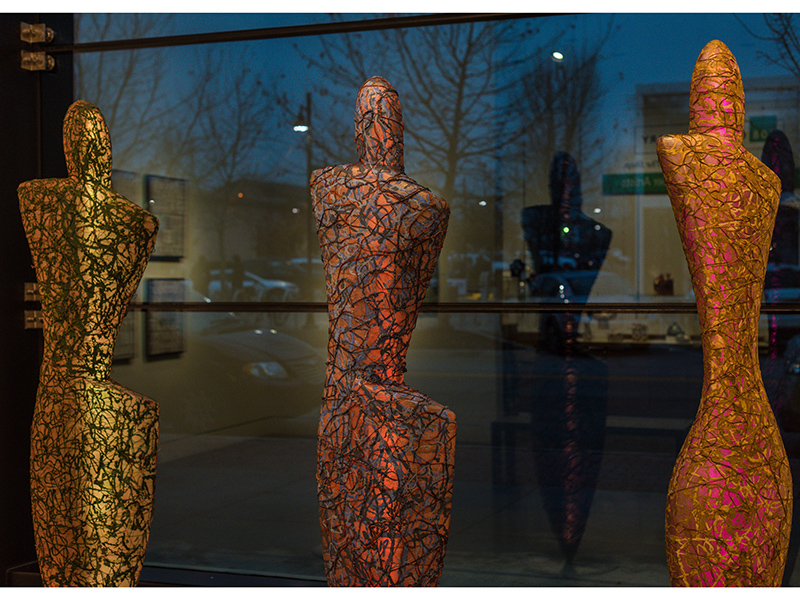
How did 108|Contemporary come into existence?
Susan Baley: 108|Contemporary originated as Brady Craft Alliance in 2009. For four years, Brady Craft Alliance brought craft artists to the area with exhibitions like VisionMakers and Crafting Ritual & Identity, our first Oklahoma invitational exhibition. The organization decided to create a new identity to acknowledge its move to the Mathews Warehouse complex in 2013. At that time, the nonprofit’s name was changed to reflect its new address at 108 East Reconciliation Way. The Tulsa Arts District is overflowing with energy and entertainment, and we wanted to match it with a new vision with programming and more ambitious exhibitions. Our top priority is to inspire, educate, and recognize contemporary art that honors traditional art practices and the quality of which it’s made.

How did you find your way to 108|Contemporary? What’s a day in your life like as executive director of an arts organization?
Susan Baley: 108|Contemporary caught my attention in 2015 with its statewide knitting project, The Unbearable Absence of Landscape, with the Oklahoma artist Romy Owens. At the time, I was the executive director of an American art museum in Terre Haute, IN. Most of my career has been spent in community engagement; therefore, I was very impressed with an organization that placed such a high value on involving the community in such an ambitious project that involved more than 400 knitters from across the state. So when the job at 108 became available in 2018, I was compelled to apply. It’s exciting to be part of an arts district and to work with contemporary artists on a regular basis. Our exhibitions change every two months, so it’s a very dynamic environment. Most of my days are spent figuring out how to fund our nonprofit’s operations. To do that, learning about the exhibitions is necessary, so I’m constantly looking ahead. I often feel like I have one foot in the current exhibition and another in the exhibition that will open a year from now!
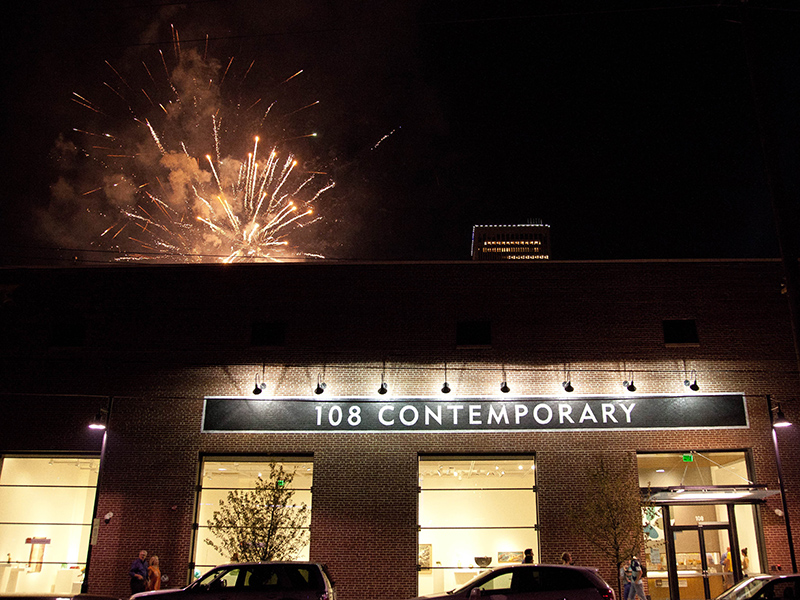
Last but not least, please share something compelling you’ve read or seen lately.
Susan Baley: Along the lines of your question about the definition of craft, I enjoyed reading the New York Times article “You Call it Craft, I Call it Art” (August 23, 2019). The article considers how social media has contributed to shifting perceptions about craft. As basket maker Senia Jugi from Borneo points out, social media allows younger makers to get attention for their work and to think of themselves as artists rather than anonymous artisans.
Thank you for your time!

